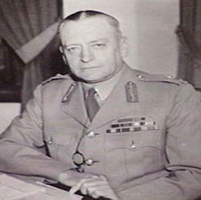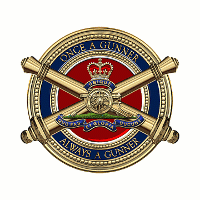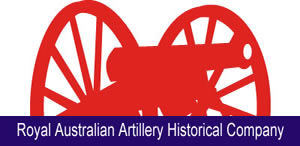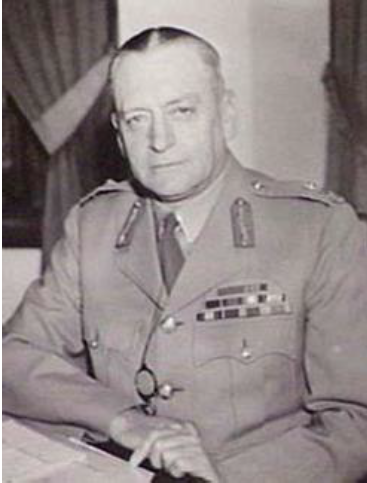 |
|
Herbert William (Bertie) Lloyd was born in South Yarra on August 18, 1883. He was the only child of Irish-born parents William Lloyd, a mounted constable (later Sergeant) in the Victoria Police and his wife Fanny Henrietta, (Nee Mills). Bertie’s early education was at Thomas Palmer’s University High School and later at Wesley College.
He started work as a clerk with the Commonwealth Treasury and as commissioned in the Australian Field Artillery in 1906 and appointed militia adjutant AFA Victoria in 1908 and promoted Captain in 1909. In March 1910, entered the Permanent Military Forces and was posted to 1 Field Battery RAFA as Battery Captain 1913.
In May 1914 Lloyd married Meredith Pleasents (d. 1952) in Redfern, Sydney.
Lloyd proceeded overseas as Captain and Adjutant of 1 Field Brigade, 1 Australian Division, 1st AIF in the first convoy of 1914 – World War I.
He landed at Cape Helles, Gallipoli, in April 1915 with the regiment which supported 29 British Division. He was subsequently promoted to Major to command 1 Field Battery and was awarded the DSO.
After the evacuation of all forces from Gallipoli he became Brigade Major 2 Div Arty, 1atr AIF stationed at Tel-el-Kebir. His ardour and training capacity MADE 2 Div Arty. 2 Div Arty left the Suez Canal area in March 1916 and went into action near Armentieres, France on 1st April 1916. Lloyd was promoted to Lieutenant Colonel to command 5 Field Brigade, 2 Aust Division of which I was a member and he became my CO. |
About February 1918 he was appointed Commander Royal Artillery (CRA) 2 Division (temporarily) and later posted to command 6 Field Brigade until about August 1918. He was then promoted Brigadier General and became CRA of the original 1 Australian Division, 1st AÏF, with which he had left Australia in the first convoy.
Lloyd served continuously on the Western Front from April 1916 until the Armistice in 1918. He received further awards of CB and CMG. He was mentioned three times in despatches. The Infantry thought the world of him and they use to say that when Bertie Lloyd was directing and controlling the supporting gunfire, “they could lean against the barrage or concentration”. What a reputation!
After World War I and about 1922, Lloyd was sent to India to attend the Staff College Course Quetta where he gained his psc. Returning to Australia, he was posted GSO1 1 Division in Sydney. In company with Col Wynter he drew up an conducted – under the CGS – army exercises and TEWT’s for senior officers of the Army.
During the visit of Edward, Prince of Wales in 1920, he was appointed Chief of Staff Officer to the Director-General White and was decorated with the CVO. He was also Chamberlain at Government House during the visit and stay in NSW of the Duke and Duchess of York in 1924. (Note: Brigadier Thompson was then ADC to the Governor).
In August 1925 because of political disinterest in defence, reduced budget, retrenchments and poor pay, he saw no future in the Army to provide for his growing family and so resigned to go into business. Lloyd also transferred to the Citizens Military Forces (CMF).
Lloyd obtained a post with Vacuum Oil Co. Pty Ltd, but severed his connection with that company on winning the Legislative Assembly seat of Parramatta for the Nationalists in 1929. Next year he became managing director of Australian Soaps Ltd. Defeated in the 1930 general elections, he was deputy-commander of the New Guard before his re-election in 1932 as the United Australia Party member for Mosman, a seat he was to retain until 1941. Following the outbreak of World War II, he held the civil post of Director General of Army Recruiting in May – July 1940.
In August, Lloyd was mobilized in the Australia Military Forces and posted to Army Headquarters as Adjutant-General. Promoted temporary Major General, he took over the 2nd Division in October. In April – July 1941 he was also Director General of Recruiting. His Division was garrisoning in Western Australia in September 1942 when he transferred to the 1st Division in Sydney. Between May 1945 and January 1946 he administered command of the Second Army. On 1 February 1946 he retired as honorary Major General. Again in civilian life, he was a board member of several companies including the Adelaide Steamship Co. Ltd.
Urbane and amiable, but firm and determined, Bertie Lloyd was a brilliant conversationalist and a good listener. His resonate voice enhance his skills as a public speaker and his fund of anecdotes enlivened his after-dinner speeches. In his social relations he had flair and adapted quickly to new circumstances. An oarsman in his youth, he later took up golf and hunting. He was a member of the Naval and Military Club, Melbourne (from 1906) and of the Union and Imperial Service Clubs, Sydney. Survived by his daughter and two sons, he died on 10 August 1957 at the Repatriation General Hospital, Concord and was cremated with Anglican rites and Military Honours. M. H. Ellis described Lloyd as ‘one of the historic figures of the A.I.F in World War I’ and observed that no soldier had ‘ever turned to him for help in vain’.
Acknowledgements:
Warren Perry in Australian Dictionary of Biography, Volume 15, (MUP), 2000.
|








